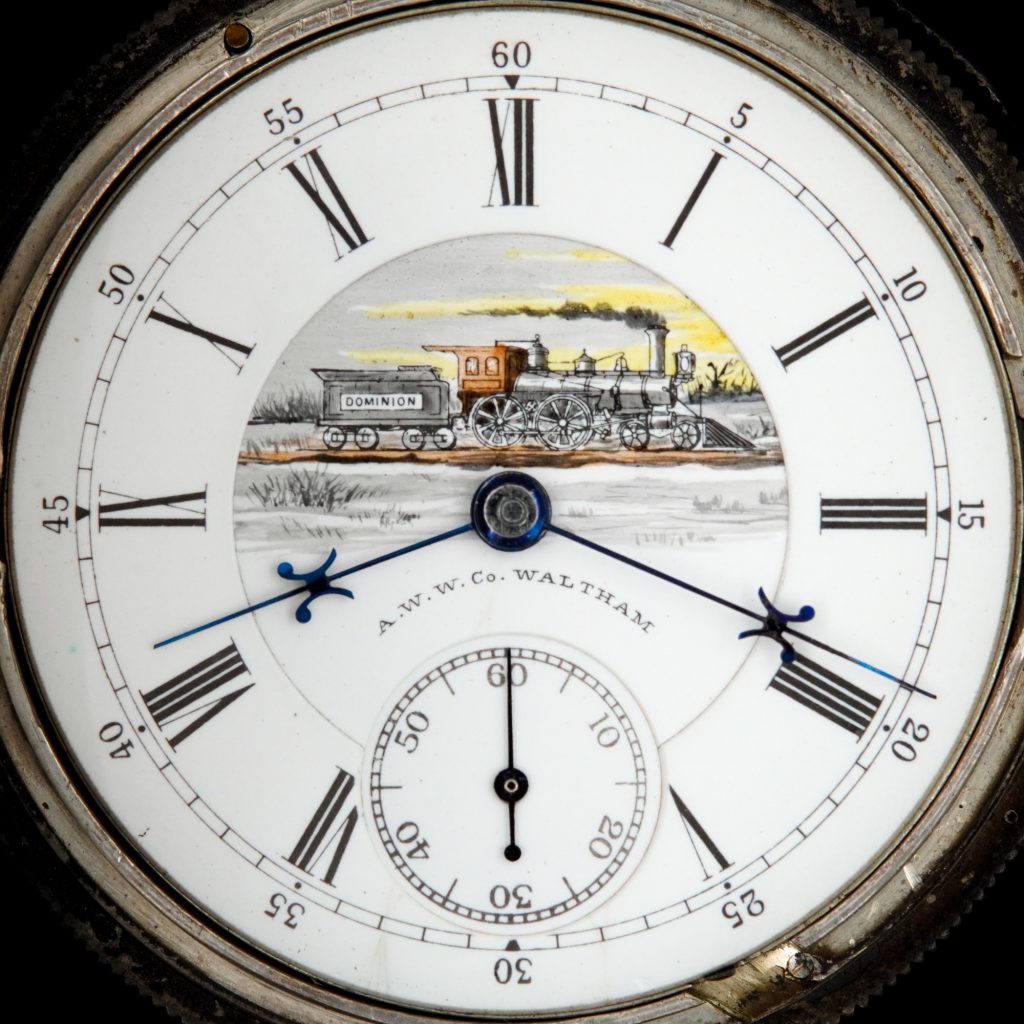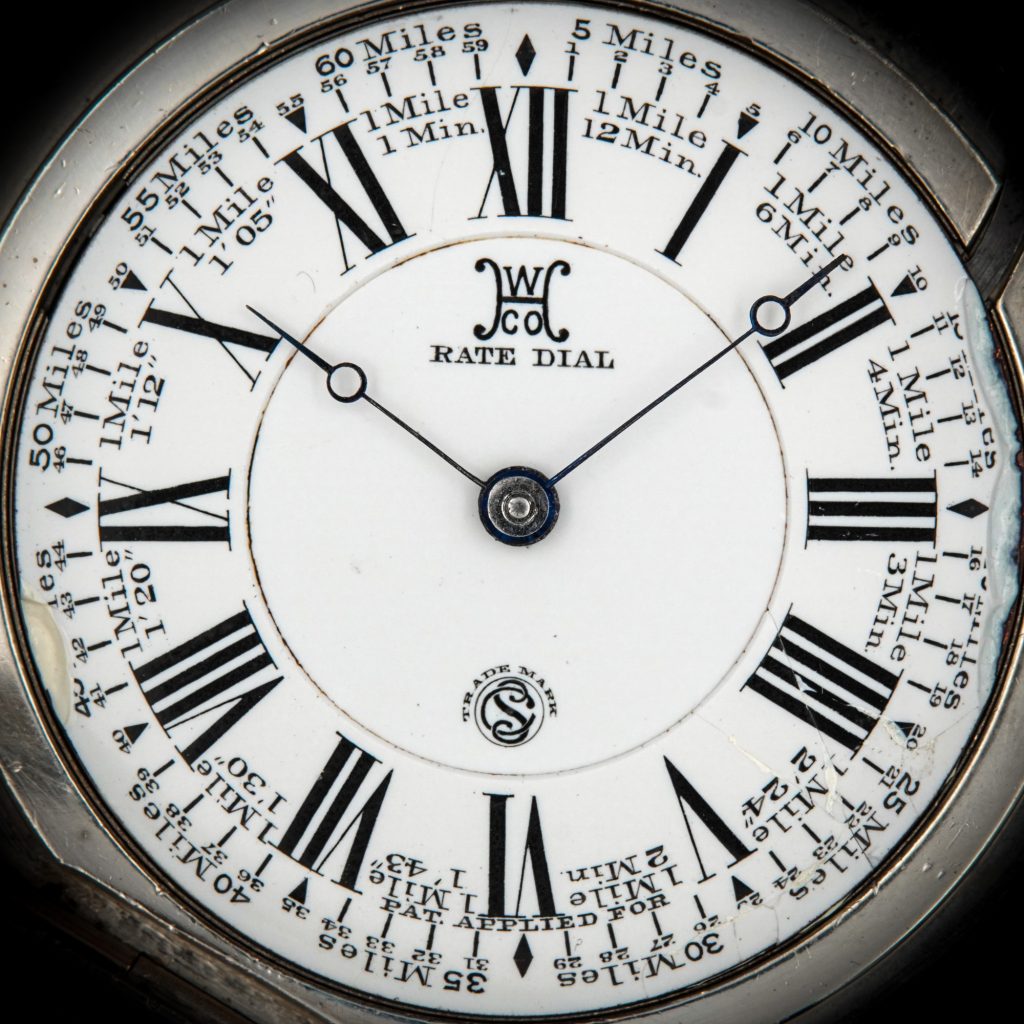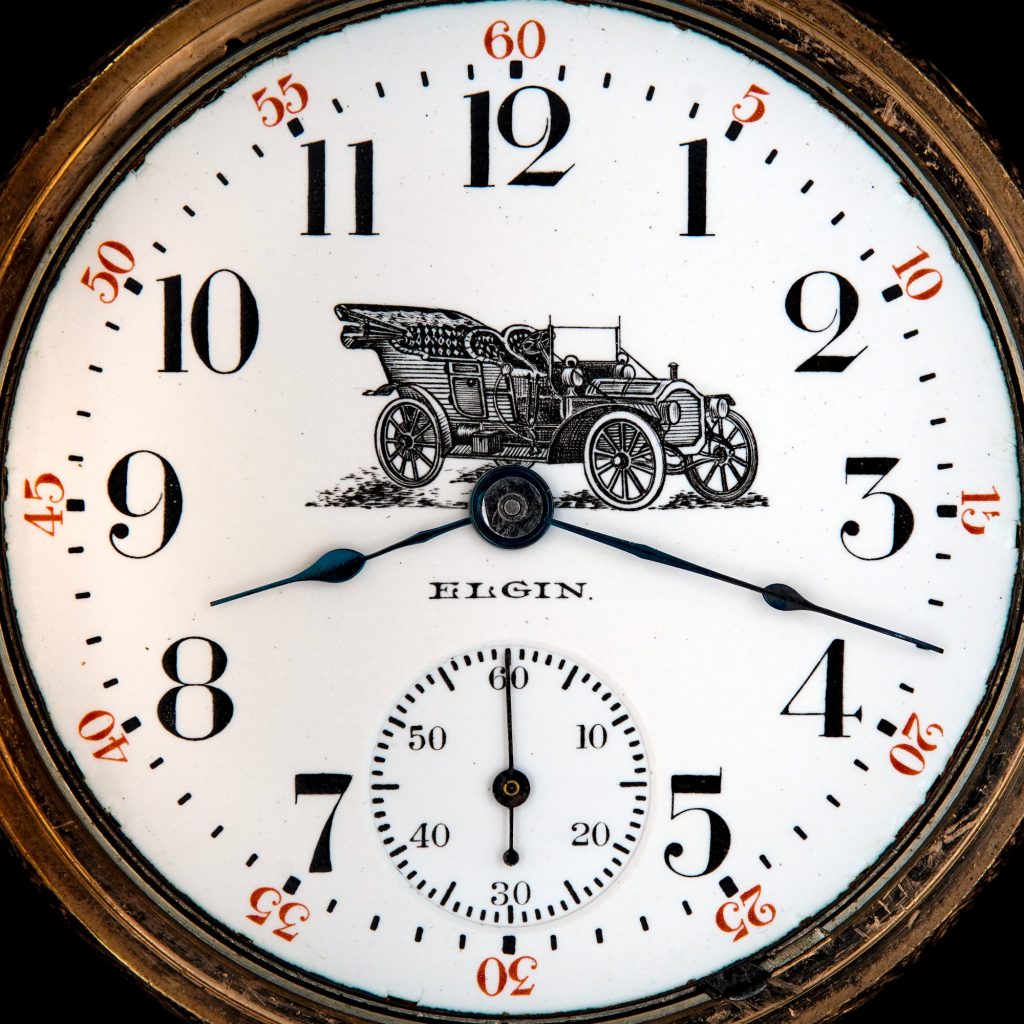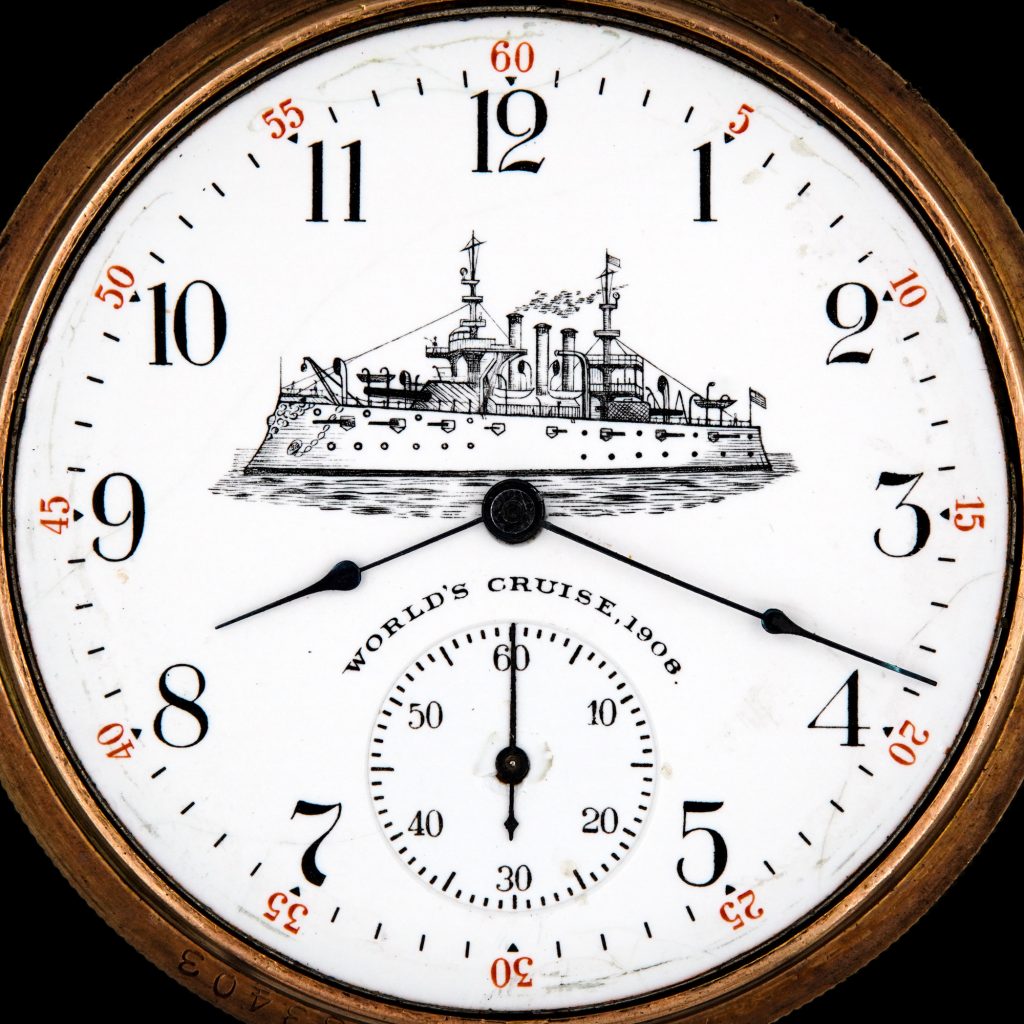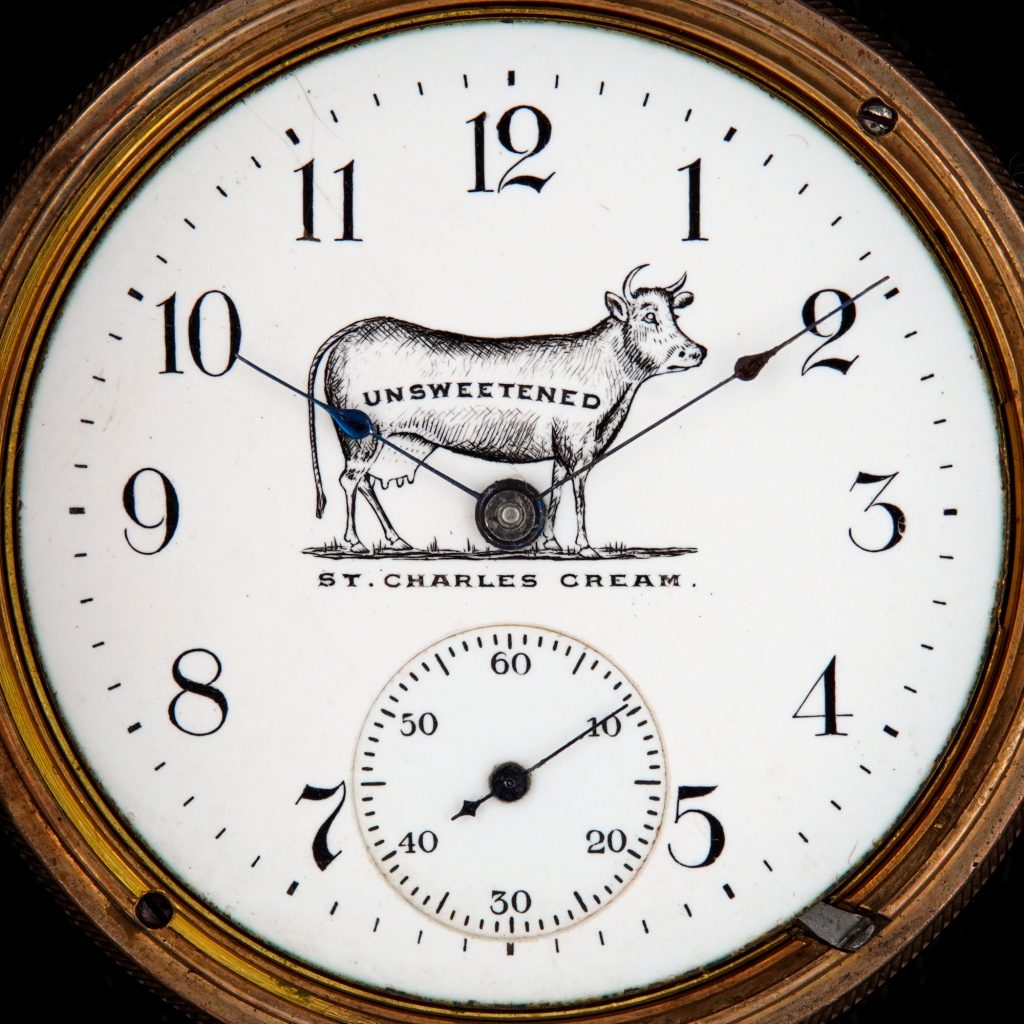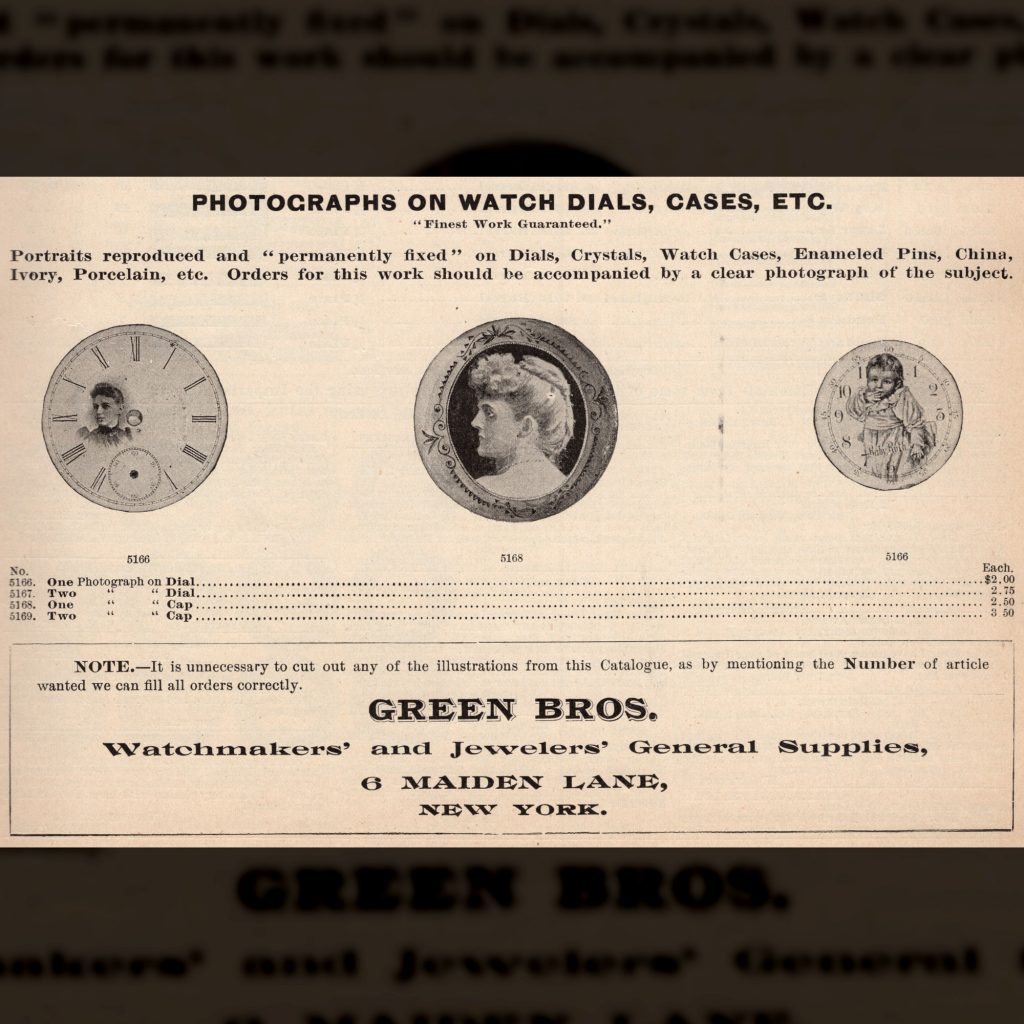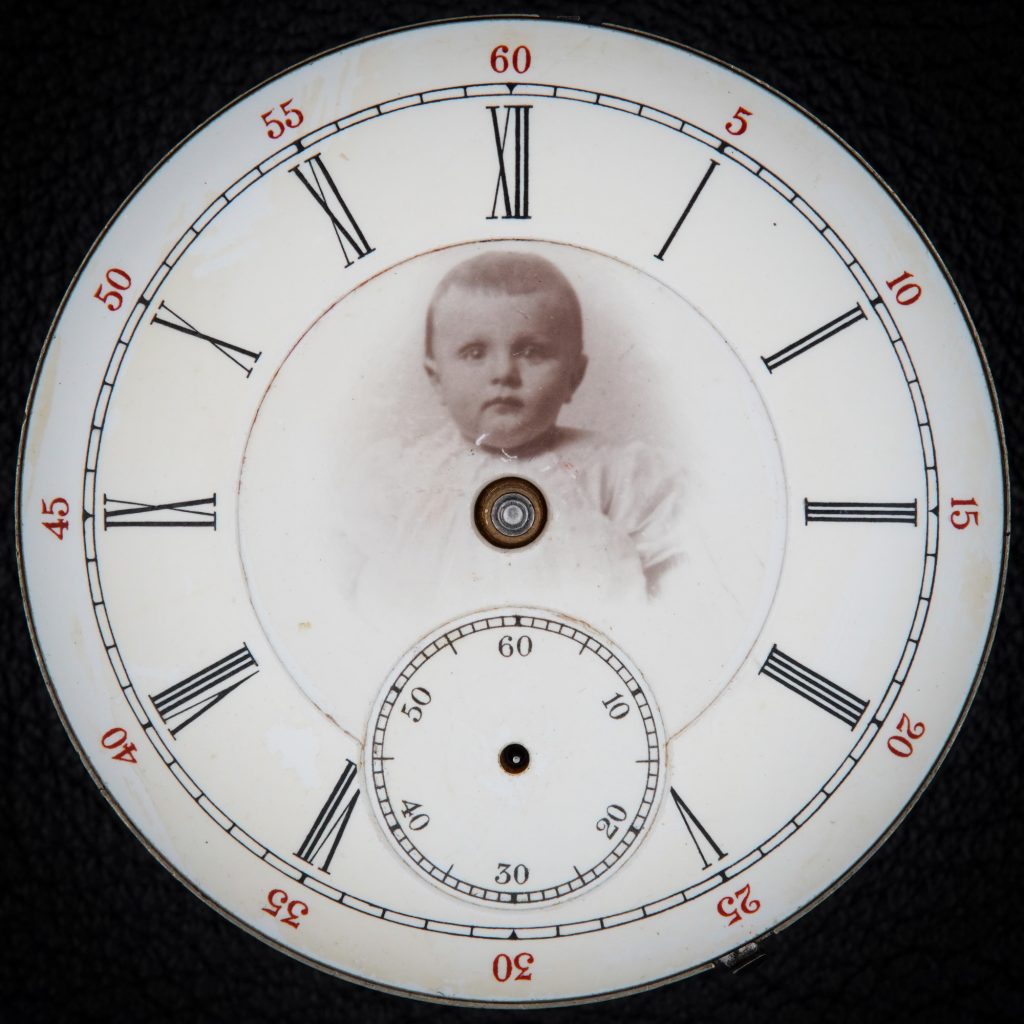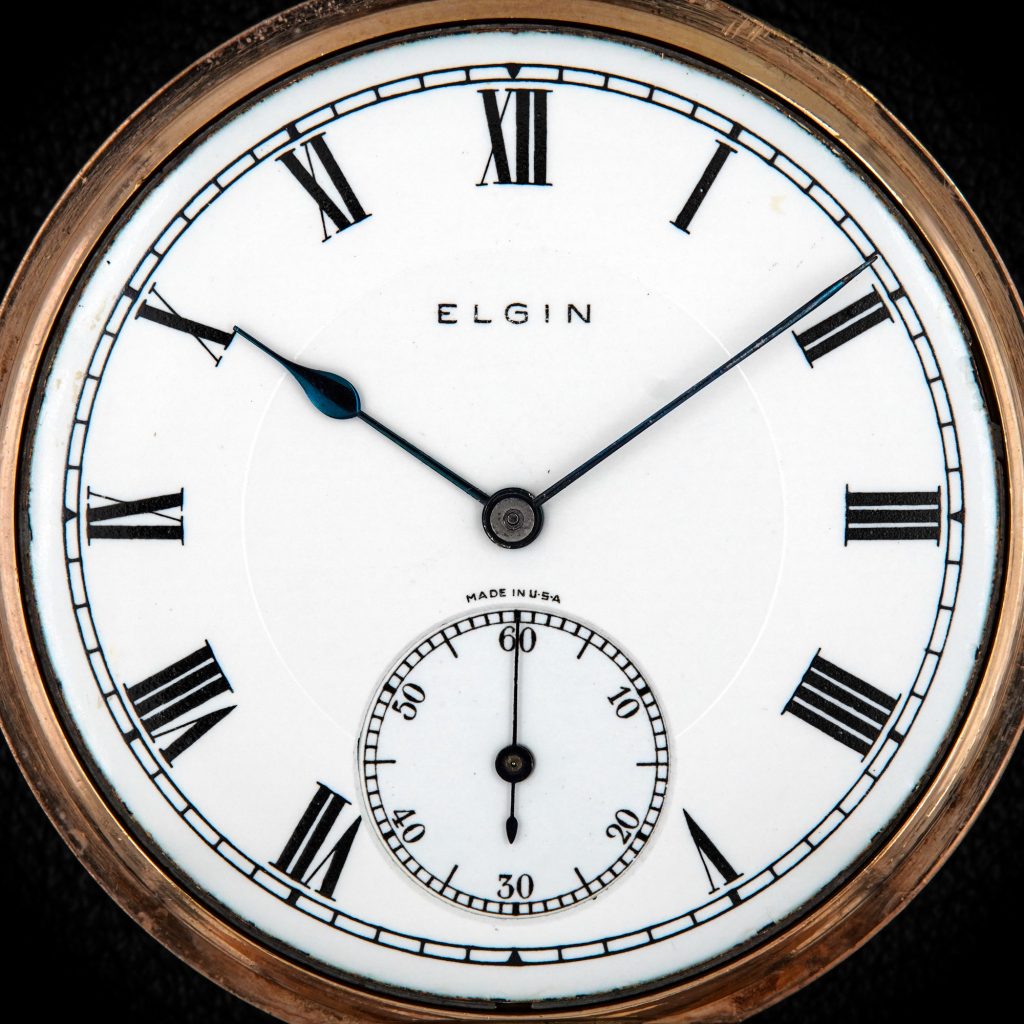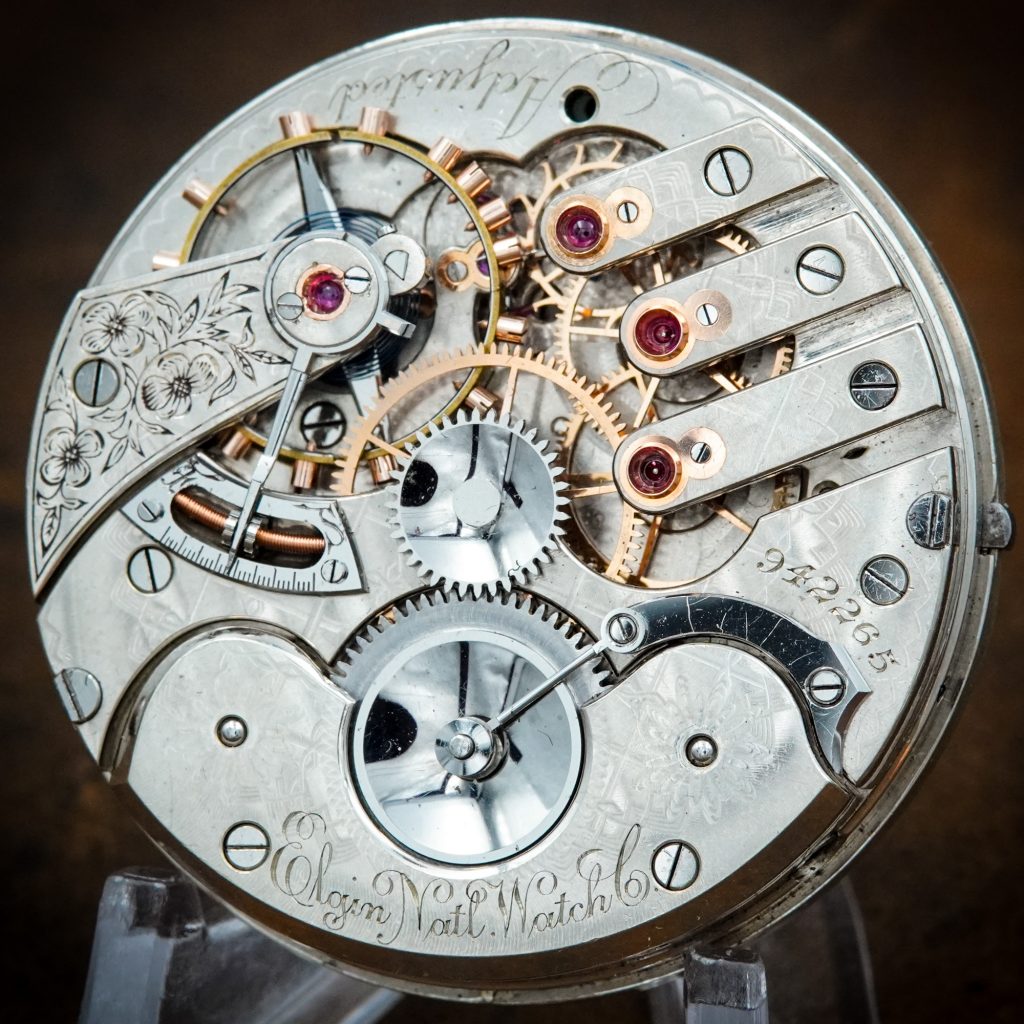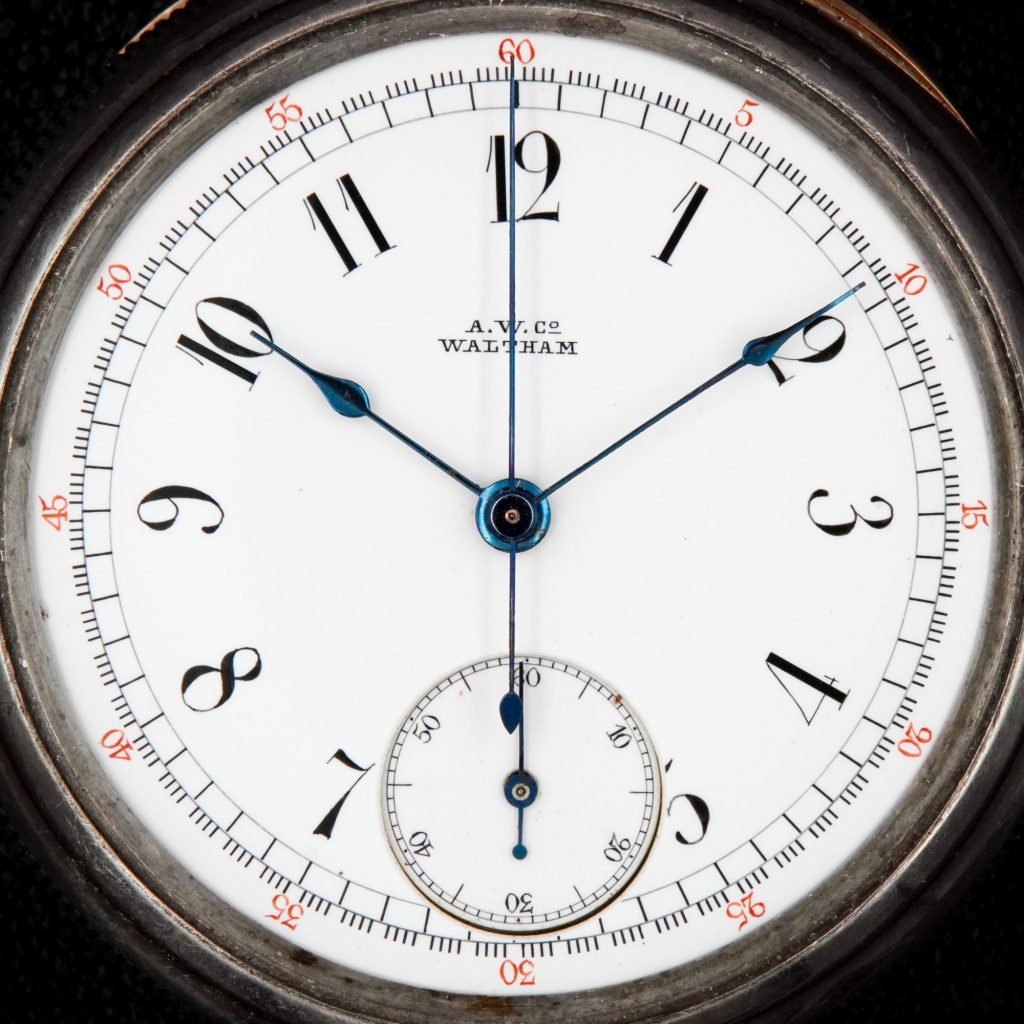
Author: Nathan Moore

Hand-Colored “Dominion” Locomotive Dial, Winter Scene, Fitted on a Waltham 18-Size Crescent St. Movement. Shortly after the American watch factories perfected new procedures for efficiently marking dials with transfer techniques,.
New image transfer techniques at the end of the 19th century also yielded innovative and practical dial designs. The “Rate Dial” Designed to Indicate Speed of Travel, c.1895, Fitted on.
Pictured: c.1909 Watch Dial Commemorating The 1908 World’s Cruise, Depicting the USS Connecticut Battleship, Fitted on an Elgin Grade 291 Movement. Using newly-developed image transfer techniques, illustrative dials were also.
Pictured: c.1900 St. Charles Unsweetened Cream Watch Dial, Fitted on Elgin 6-Size Grade 95 Movement. The advancement of transfer techniques for marking dials in the late 19th century provided new.
Pictured: Enamel Watch Dial Featuring Portrait Photograph, c.1891 In the 1890s, as photographic techniques were quickly advancing, the practice of placing portraits on enamel watch dials and case caps became.
Pictured: Roman Numeral Dial on Elgin “Export” Watch, Grade 475, c.1922. Once new transfer and photographic techniques were mastered by the American watch companies, Arabic Numeral dials grew in popularity.

